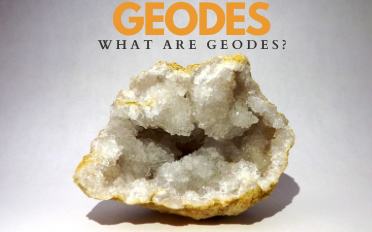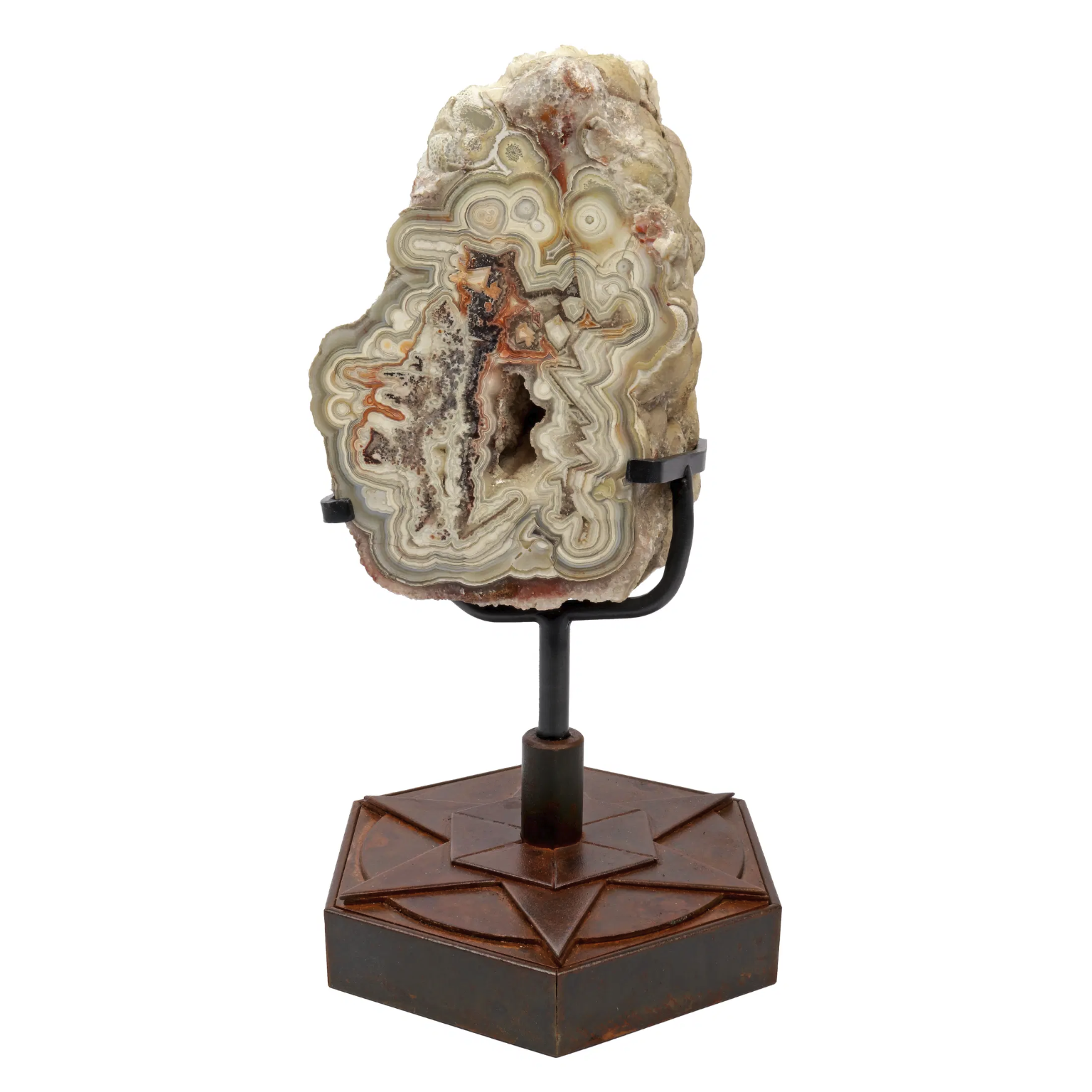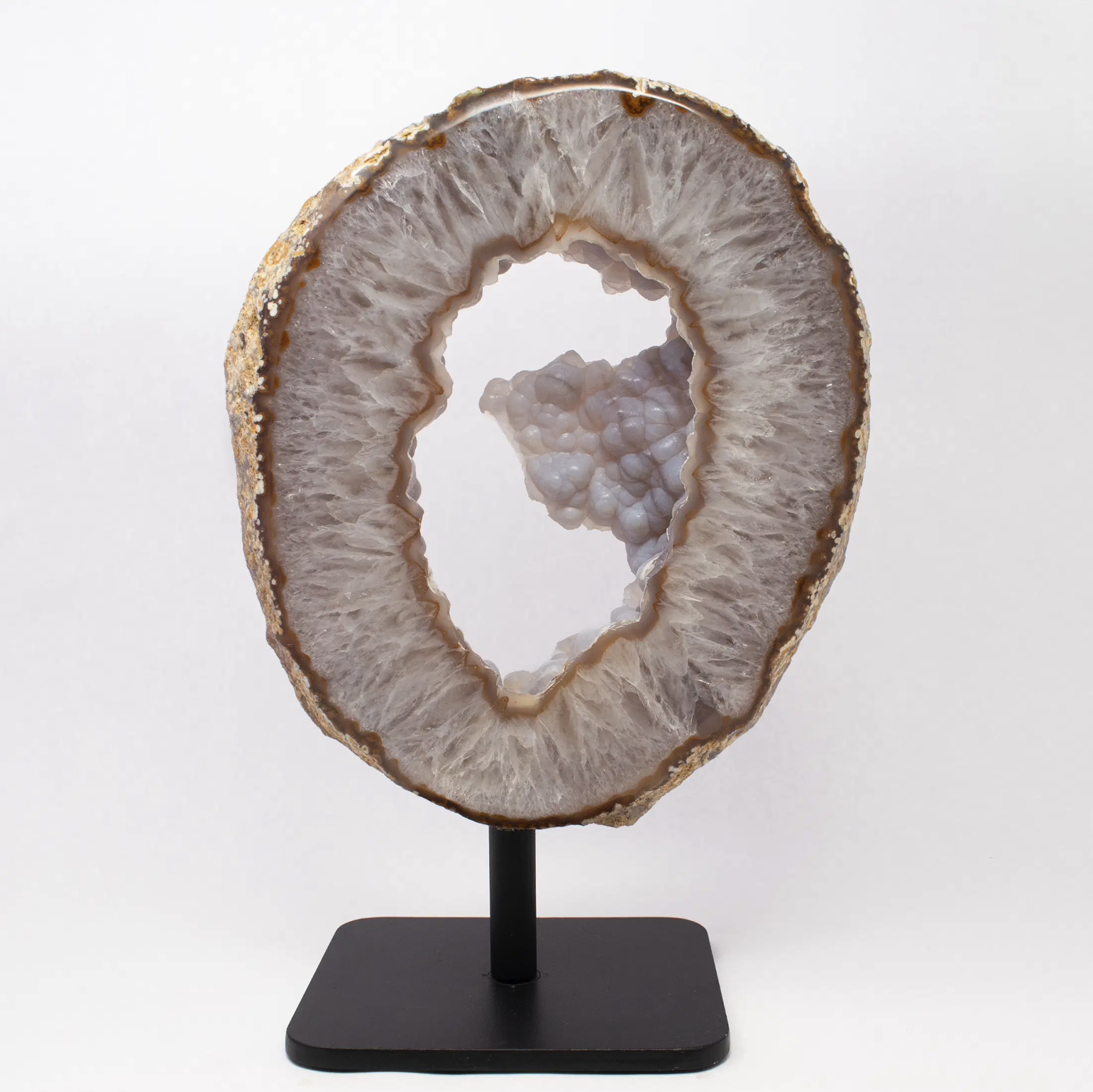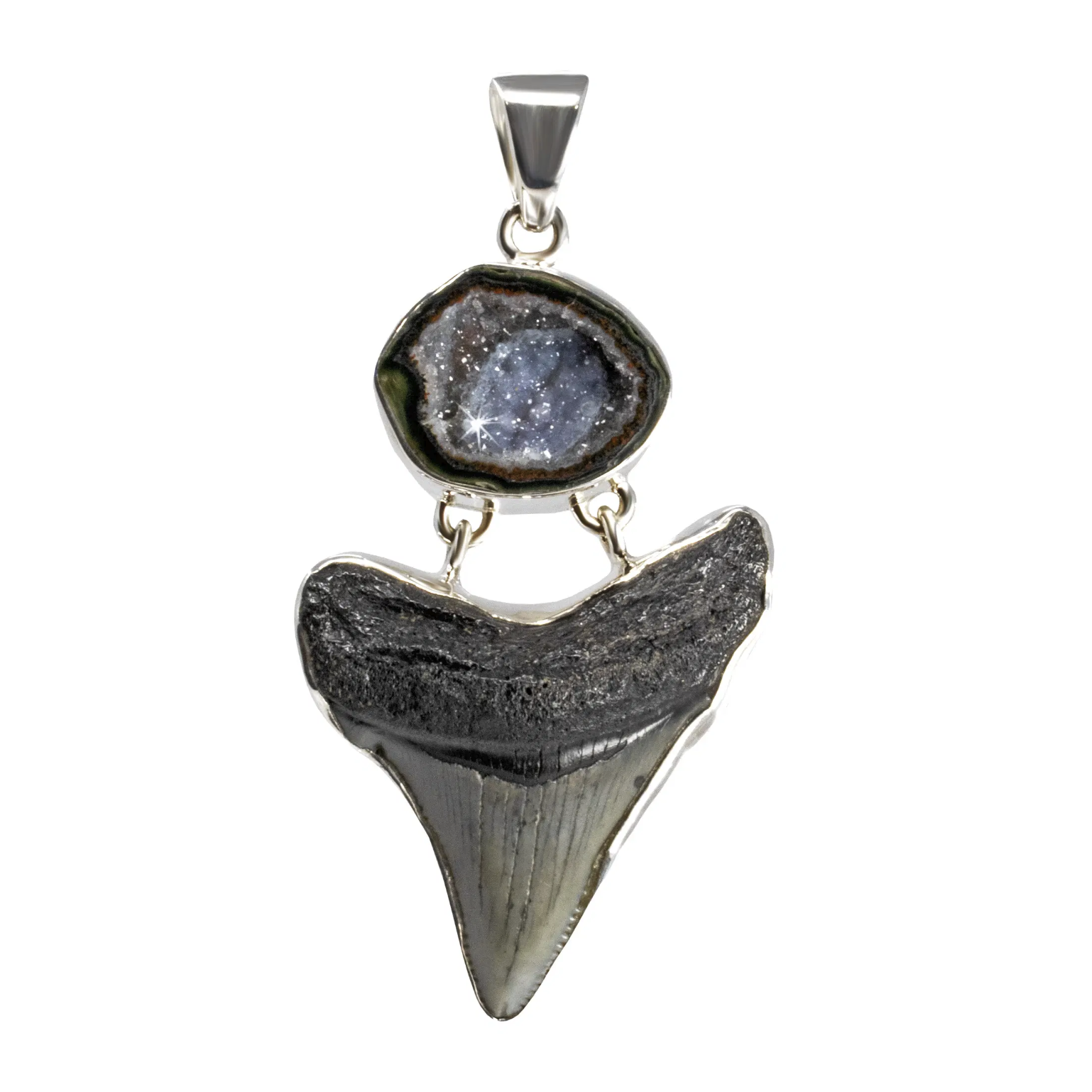What are Geodes? | Information, How They Form, Properties All Entries

Geodes are truly captivating! They have fascinated geologists, rock collectors, and nature lovers for years. Their hollow interiors lined with sparkling crystals make them unique. Geodes can form beautiful crystals like Amethyst, Quartz, Calcite, Citrine, and more. Geodes are popular as decor, stunning jewelry, and valuable collector's pieces. Let's explore how these wonders of nature come to be...
Amethyst Geode Sphere Amethyst Geode Sphere
How Geodes Form
Geodes are hollow rocks filled with crystals. They can form in different ways, either through volcanic activity or within sedimentary rock. Volcanic geodes happen when gas bubbles get trapped in cooling lava. Over time, mineral-rich groundwater fills these bubbles and lines the hollow space with crystals like Quartz, Calcite, or Agate.
Laguna Lace Agate Geode
Sedimentary geodes form in natural cavities like animal burrows or spaces left by old tree roots. When these hollow areas are surrounded by rocks like limestone or shale, groundwater full of dissolved minerals seeps in. This process takes years, slowly building up beautiful crystal formations inside.
Rose De France With Carnelian Agate Geode Ring
Where Geodes Are Found
The name "geode" comes from the Greek word "geoides," meaning "earthlike." Geodes are found worldwide, but some of the best come from Mexico, Brazil, Morocco, Madagascar, and Australia. The largest geode ever discovered, called the Pulpi Geode, was found in Spain in 1999. It was over 36 feet long and filled with massive calcite crystals!
Black Titanium Coated Moroccan Geode
Geodes in Decor, Jewelry, and Collecting
Geodes are perfect for home decor, bringing a touch of natural beauty indoors. They also make stunning jewelry pieces, like pendants and earrings, showcasing the crystals' sparkle. For collectors, geodes are prized specimens because of their unique shapes and the variety of crystals they contain.
Megalodon Shark Tooth Pendant With Geode
The Energy of Geodes
Geodes symbolize that you can't judge a book by its cover. They may look ordinary on the outside, but inside, they hold beautiful surprises. This teaches us a lesson about looking deeper and not making quick judgments. Different geodes also carry different energies. For example, an Amethyst geode is thought to bring peace, serenity, and help with sleep. Quartz geodes are believed to promote clarity and balance. If you're curious about the energies of other geodes, check out our blogs on Amethyst, Quartz, and Celestite.
Geodes are not only stunning to look at but also rich in symbolism and energy. Whether you use them for decor, jewelry, or as part of a collection, they bring a unique and beautiful connection to nature into your life.
Rose Quartz Macaw on Amethyst Geode
Special Offer: Use code "Geode10" at checkout for 10% off your purchase of Geodes at Rare Earth Gallery!










